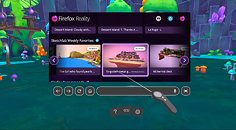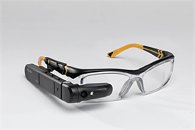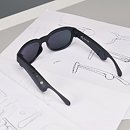
Apple "Vision Pro 2" Components Reportedly Being Mass Produced in China
Since its summer 2023 launch, Apple's pricey Vision Pro mixed reality headset has not exactly attracted a mainstream audience. Roughly a year later, rumors of a (then) recently canceled successor appeared online—insiders posited that company engineers had pivoted onto the development of a cheaper alternative model. Vision Pro "Version 1.0" arrived with an intimidating $3499 price tag; thus eliminating interest from a wide swath of potential AR/VR headset enthusiast customers. Industry insiders reckon that Apple had "abruptly reduced production" of the current-gen model last October, with further whispers suggesting a complete cessation of manufacturing activities by the end of 2024. Yesterday, an ITHome article cited compelling claims made by supply chain insiders—the initiation of mass production for a speculated second generation "Apple XR/Vision Pro" device.
The online report stated that: "multiple independent sources (have) confirmed that the panels, shells and other key components of the second-generation Apple XR headset are already in production." Very specific leaked information indicates Lens Technology being the exclusive supplier of glass panel pieces, and Changying Precision tasked with the making of the next-gen model's casing. Additionally, several contract circuit manufacturers are supposedly "rushing to complete orders." Secretive figures posit that Apple will release its sequel mixed reality headset later on in 2025. Differing "expert opinions" have not determined whether this incoming set of fancy goggles will be the predicted "cheaper" model, or a proper "M5 SoC-powered" successor.
The online report stated that: "multiple independent sources (have) confirmed that the panels, shells and other key components of the second-generation Apple XR headset are already in production." Very specific leaked information indicates Lens Technology being the exclusive supplier of glass panel pieces, and Changying Precision tasked with the making of the next-gen model's casing. Additionally, several contract circuit manufacturers are supposedly "rushing to complete orders." Secretive figures posit that Apple will release its sequel mixed reality headset later on in 2025. Differing "expert opinions" have not determined whether this incoming set of fancy goggles will be the predicted "cheaper" model, or a proper "M5 SoC-powered" successor.

























































